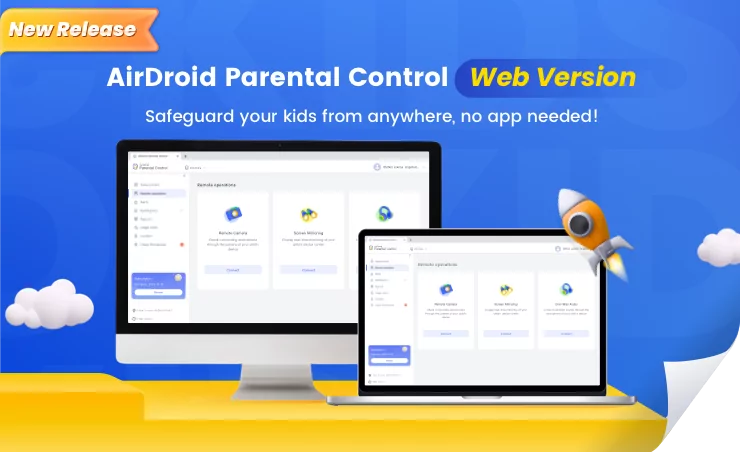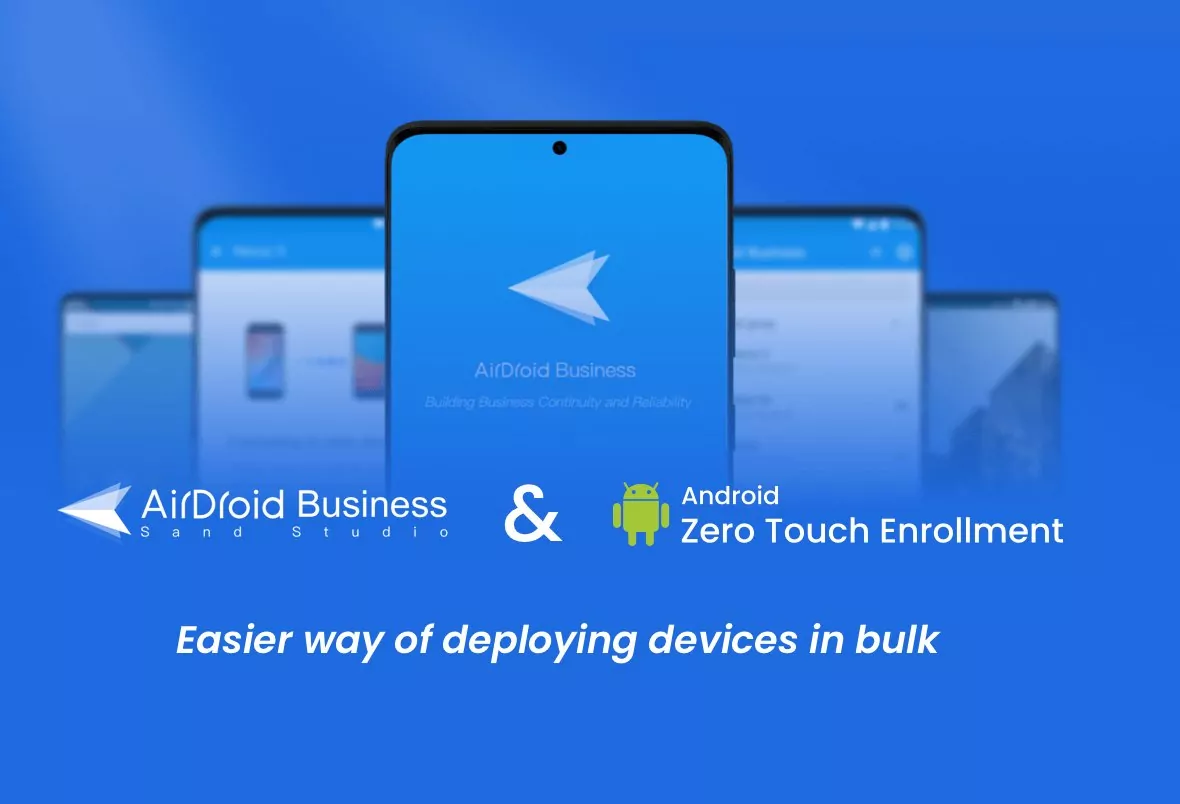How to Automated Data Integration 2025
A business receives millions, if not billions, of data points daily. Whether it is website visits, customer interactions, operational systems, or sales transactions, there is data to collect, analyze, and utilize for informed decision-making. Manual management of such information is not only tedious but also time-consuming. Automated data integration is the solution for managing massive data from different sources.
This blog post covers the automation of data integration from the basics to technical implementation. Keep reading to learn more.
Part 1. What is Automated Data Integration?
Automated data integration involves gathering, managing, analyzing, and loading information from various sources with minimal human effort. Raw data, though important, often lacks clarity or actionable insights. Automation enhances this process by converting raw data into a structured, useful format, enabling businesses to extract value and make informed decisions more easily.
Statistics on employment automation indicate that machines can handle 50% of the tasks,, and data integration is no exception. While there are concerns about automation's impact on jobs, this technology allows organizations to focus on more complex tasks and minimizes human error.
Before we explore further, it’s important to define key terms commonly encountered in data integration automation.
Automated Data Integration Glossary
- ETL (Extract, Transform, Load): A type of data pipeline involving the extraction, transformation, and loading of data from various sources into a single storage system.
- Data Source: The origin of data, which can be digital (e.g., websites) or traditional (e.g., customer interactions).
- Data Warehouse: A large repository for structured data from multiple sources used for analysis.
- Data Lake: A storage system for vast amounts of structured and unstructured data.
- API: An application programming interface that facilitates communication between two applications.
- Data Mapping and Synchronization: Processes that match interrelated data fields and automatically harmonize data between the source and storage to maintain consistency, enhancing data quality.
- Data Quality: The measure of data consistency, timeliness, accuracy, and reliability for decision-making.
- Data Synchronization: Automatically harmonizing data between the source and storage to maintain consistency.
- Master Data Management (MDM): Creating and maintaining a single, consistent, and reliable source of structured data.
- Cloud Integration: Combining different cloud-based and on-premise systems to create a unified data source.
- AI-Powered Integration: Using artificial intelligence to automate data collection, organization, and storage.
- Data Normalization: Reorganizing information in a database for easier analysis and utilization.
- Integration Platform as a Service (iPaaS): Cloud-based software that connects and integrates data from various sources for organization, analysis, and dissemination.
Part 2. Traditional Automated Data Integration vs. AI Automated Data Integration
Artificial intelligence has revolutionized different industries, and data integration isn’t an exception. Traditional automated data integration follows the ETL approach, which means the process is more rigid compared to emerging technologies like AI and ML.
Let’s consider the differences between the two data integration methods.
| Traditional Automated Data Integration | AI Automated Data Integration | |
|---|---|---|
| Technology | Coding and technical manipulation | Machine learning and natural language processing |
| Level of Automation | Moderate | High |
| Flexibility | Limited | Highly flexible |
| Handling of Real-time Data | Ad hoc or scheduling approach | Continuous and on-the-go |
| Processing Unstructured and Complex Data | Requires human intervention | Fast and consistent |
| Error Detection and Correction | Takes time | Easily fixed |
| Ease of Integration | Rigid in collaborating with new tools | Easily compatible |
1. Technology
The traditional methods of data integration mostly rely on coding languages to create systems that can execute with minimal human intervention. This means that users need considerable technical skills to design, implement, and maintain the integration processes effectively. The complexity of writing scripts, configuring tools, and troubleshooting issues makes these tools a reserve for techies.
On the other hand, AI-based data integration uses natural language processing and machine learning to manage the whole process. Unlike the traditional method, this technology requires minimal to no human intervention. This ease of implementation explains why over 63% of organizations intend to adopt the technology by 2027.
2. Level of Automation
The primary areas of automation for traditional data integration are extraction, transformation, and loading. However, data mapping, cleaning, and error-handling rules require manual intervention. The tools have limited schema management capabilities, which calls for human hands.
If you use AI to automate data integration, you can achieve a “hand-off” process, depending on the sophistication of the algorithms. The technology automates most processes that require human intervention in traditional integration.
3. Flexibility
The modern methods of data integration are more adaptable to different operations. For example, they can identify errors in previous processes and rectify them in new integrations. The progress improvement from regular data training means enhanced data integration with time.
For traditional automation, the processes are based on pre-determined rules and conditions. So, the tools are rigid and follow as they are, making it difficult to identify data errors.
4. Handling Real-Time Data
While traditional data integration is done on an ad-hoc or scheduled basis, AI handles the data and insights in real time. Therefore, modern methods ensure no delays in data collection and analysis. AI automated data integration is continuous and progressive as new data is available.
If your industry is undergoing regular changes in trends, AI-based data integration is the best option because it ensures timely decision-making. Besides, you can respond promptly to emerging or changing trends, giving you a competitive edge. On the other hand, traditional data integration could lead to insight obsolescence.
5. Processing Complex and Unstructured Data
Creating meaningful insights from unstructured data requires human intervention to organize the data. This process delays and exposes the integration to human errors, further stifling the process. For any organization, data increases in volume and complexity over time, leading to performance bottlenecks when using traditional automation of data integration.
On the contrary, AI systems use machine learning to identify patterns in unstructured data and derive insights. Therefore, scaling with artificial intelligence is faster, and the data quality is minimally affected.
6. Error Detection and Correction
Errors can be costly, especially when handling massive and sensitive data. Because traditional data integration requires more human intervention in processes like mapping, it increases the chances of error. Consequently, it could lead to skewed decisions because of erroneous insights.
AI-powered integration reduces errors such as typos, duplication, and inconsistencies. These systems can identify discrepancies without explicit human instructions, thanks to their ability to learn patterns and detect anomalies.
7. Ease of Integration
Because of the flexibility of AI-automated data integrations, they are more compatible with other systems and devices. This makes data access easy across different platforms and forms. Due to this, AI-based tools have a better user experience.
Traditional integration faces many hurdles in compatibility with new tools. Consequently, they limit shifts from one tool to another. Besides, the process is tedious because it requires human intervention.
Part 3. How to Automate Data Integration?
While automated data integration is essential for any organization, it requires careful planning to ensure it meets your needs. Here is a 7-step guide on how to automate data integration for maximum efficiency.
1Need Assessment
When going on an expedition, you need to understand it and your capability to chart the path. The same applies to data integration automation. Here are some questions to help you know your needs:
- What are your current data strategies?
- What are your data sources?
- How is your current data integration system?
- Are there bottlenecks in your data pipeline?
- How much time do you have to transition?
Once you answer these questions, you get a clear picture of the tools that meet your expectations. It is also easy to know whether you need assistance from a third party to help in the data migration process.
2Selecting a Tool
After the first step, identify different tools that meet your needs. As a rule of thumb, you should have at least 3 different platforms to compare. Ensure that the tools can support your data source, has a user-friendly interface, has the necessary data quality checks, and is compatible with other tools. Involving your technical team to identify potential limitations and ensure the selected tools align with your long-term objectives.
Getting a demo at this stage is essential for a hands-on experience with the tool. Your budget is also an important factor to consider. Some have annual or monthly packages, while others charge depending on the number of users. Do a cost-benefit analysis based on the features provided because some might seem expensive but can replace other tools you are using in your business.
3Data Mapping
After choosing a tool, you need to map different data points between the existing and the new system. If you are automating data integration for the first time, identify the key data fields that need to be transferred or synced. Create a comprehensive mapping document to match the fields in your current system with those in the new platform.
Besides mapping, you should also transform your current data into formats that are compatible with the new tool. Some aspects to consider in this step include data fields and naming conventions that align with the tool. It is advisable to test a sample of the data before scaling the process.
4Data Validation
Ensuring the accuracy, consistency, and quality of the data after migration is essential before utilization. First, ensure no discrepancies between the original and the new data. After that, run checks for duplicate, missing, or corrupt data. If there are anomalies in the data, fix the issues.
The next validation step is to perform functional tests by manipulating the data to ensure the data yields the desired results. Lastly, compare the key metrics like totals and averages to confirm the data is ready for utilization.
5Workflow Automation
The objective of automation of data integration is to reduce human intervention in the processes. So, you should create automation workflows that can handle task execution, data extraction, and correction of errors.
Because you should have the end user in mind when setting up the workflows, it is advisable to involve all the teams in this process. This ensures that you have a clear view of all the operations in the organization.
6Monitoring and Optimization
Constant data monitoring is essential to fix errors in real-time. You can optimize the data integration process for faster and better decision-making.
For example, in e-commerce, monitoring sales data in real time can help identify inventory shortages or high-demand products. This informs restocking or price adjustment strategies to maximize revenue.
Part 4. The Necessity of Automated Data Integration
1Cost Reduction
According to Gartner, organizations lose nearly $13 million on average due to poor data quality. One of the primary contributors to data errors and inconsistencies is manual management. Automation can help save millions of dollars by reducing costs associated with:
- Human error
- Insight obsolescence due to delays in decision-making
- Extra labor for data organization and analysis
- Maintenance of data management systems
- Running redundant systems
Because of the ease of operating automated data integration tools, organizations don’t have to hire experts to initiate the process. Besides, the self-maintenance process further reduces the costs.
2Increased Data Delivery Speeds
It is not only tedious to manage data manually but could also lead to delayed implementation of strategies. Automation of data integration can reduce the delivery time, as shown by HighRadius in invoice processing. The company reports that automation speeds up the process by up to 80%.
Reducing human handling also reduces the chances of error, which could lead to delays during correction. Automated synchronization ensures regular updates of the systems, reducing the time spent on troubleshooting and error fixing. Apart from that, data unavailable at the decision-making stage is reduced.
3Data Efficiency
Although 77% of data analytics professionals indicate that data-driven decision-making is important, only 46% have confidence in their data. Automation increases confidence in data because of the efficient workflow in data management. Modern automated data integration tools facilitate real-time data synchronization, enhancing response efficiency.
Unifying data across different sources manually takes a lot of time. However, automation allows companies to integrate data from various sources quickly and accurately, ensuring consistency and reliability.
4Improved Data Quality
Almost 40% of projects fail due to challenges in merging and integrating different data sets. Therefore, effective data synchronization is essential to any business or organization. Through automation, companies can ensure they have reliable data to make informed decisions.
Manual data cleaning before utilization often results in errors, which can compromise the quality and usability of the data. Data quality automation through platforms like HubSpot makes it easy to identify inconsistencies, duplication, and errors. This saves time, ensures faster project execution, and leads to better decision-making.
5Enhanced Customer Insights
Automated data integration helps organizations aggregate information from multiple sources, creating a harmonious system. The tools can collect data from social media, websites, and physical locations and unify the data for a 360-degree view of customer engagement. For example, customer data platforms (CDPs) allow users to create profiles that specify clients’ demographics, purchase history, and engagement metrics.
According to McKinsey research, AI personalization increases conversions by 10-15% and boosts satisfaction by 20%. Automation makes it easy to identify trends and signals, which is essential in adapting your strategies to trends and changes in the market.
Part 5. Successful Cases of Data Automation Integration
Learn how automated data integration helps businesses improve efficiency through the following success stories.
EssilorLuxottica AMERA
Utilizing online and offline customer interactions in data integration is essential for the success of any business. In 2023, EssilorLuxottica used Boomi to automate data integration for efficiency in the ophthalmic lenses business.
Through the iPaaS, EssilorLuxottica has reduced end-to-end order processing to less than half a minute. Besides, the company has also reduced its operation costs, thanks to the efficient data management system.
City of Boston
An example of a government institution that has initiated an efficient automated data integration system is the City of Boston’s administration. The city partnered with Civis Analytics to create a centralized data system. Boston migrated 92 legacy data pipelines, making supporting different departments easy.
Apart from that, it is now easier for the public to access data to ensure equity, transparency, and accountability. The city’s administration can also measure the efficiency and return on investment of different undertakings for optimum utilization of available public resources.
Sorgenia
Automation for data integration is essential in monitoring marketing trends and changes in customer patterns. Sorgenia used GE Vernova’s system to help in predictive data analytics for sustainable investment in sustainable energy.
Through the tool, Sorgenia gets alerts when a condenser experiences a 10% reduction in its cooling capacity. This ensures minimal carbon dioxide emissions, curbing the impact of the company’s products on the environment.
Walmart
Walmart has one of the hugest databases, considering the retail store’s size. With over 11,000 stores and 2 million associates, Walmart implemented an automated data integration to reduce human involvement in its processes.
The implementation of EDI technology from Cleo (popularly known as Eyes of Walmart) has significantly reduced data errors and led to faster processing times. Consequently, the company increased customer satisfaction.
Airbnb
Zipline, AirBnB’s data management system, has done an amazing job helping the company personalize recommendations and optimize search functionality. The tool uses machine learning technology to analyze user behavior, preferences, and booking patterns.
Integrating data from multiple sources enables Airbnb to deliver tailored experiences, improve search relevance, and enhance user satisfaction. This data-driven approach also helps hosts optimize pricing and availability based on demand trends.
Conclusion
Automated data integration is essential for businesses navigating today’s data-driven landscape. From improving data accuracy to optimizing operational efficiency, automation transforms how organizations collect, process, and utilize data.
As AI and ML technologies advance, future trends point toward more adaptive, real-time, and intelligent integration processes. Businesses adopting these innovations will gain a competitive edge by making timely, informed decisions.








Leave a Reply.